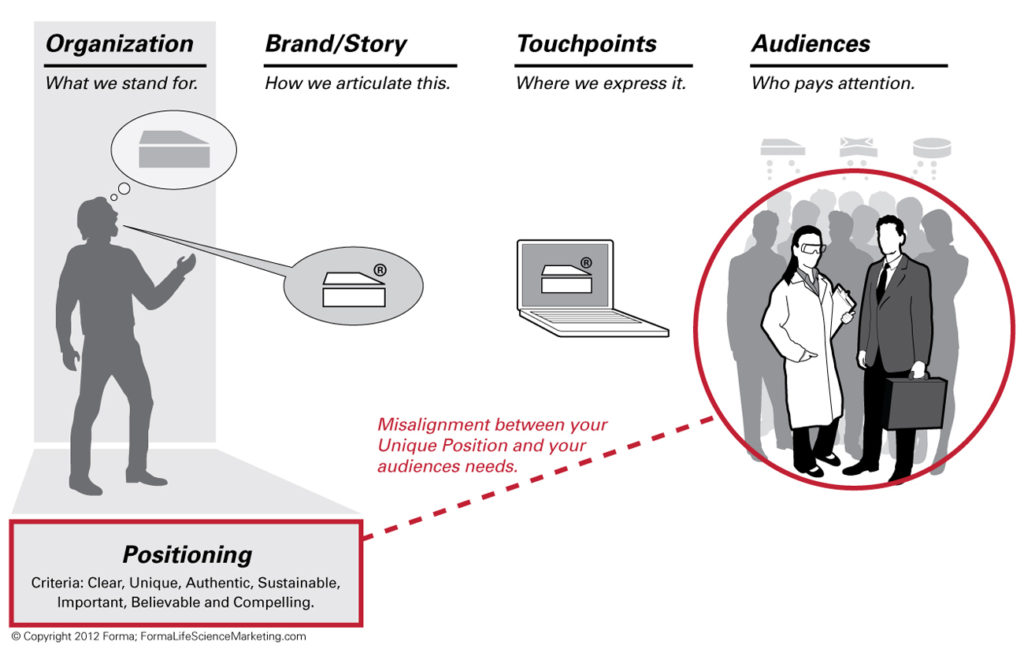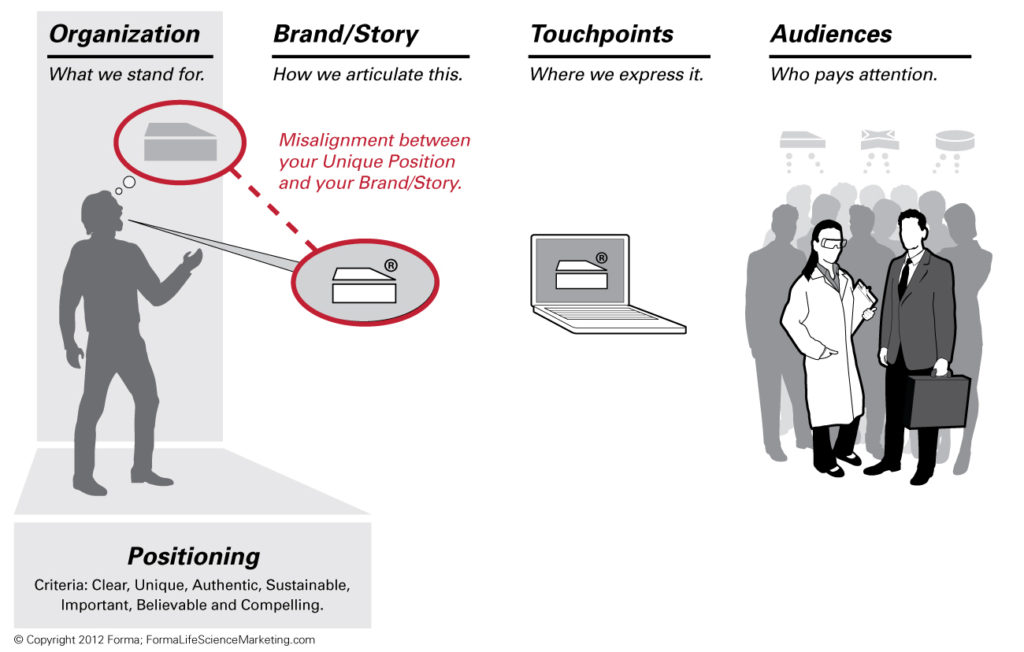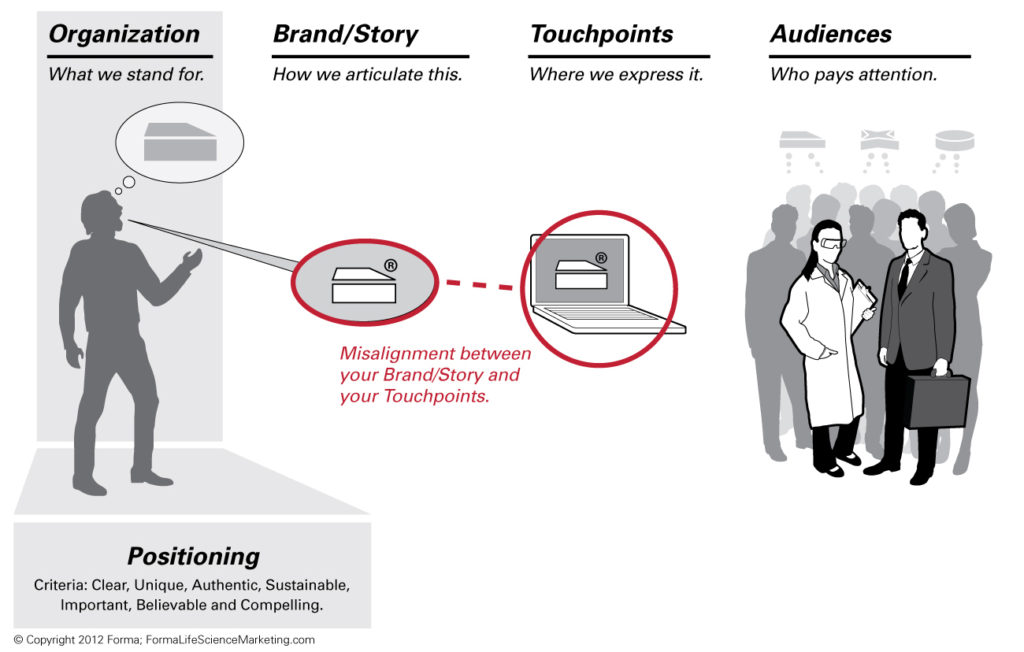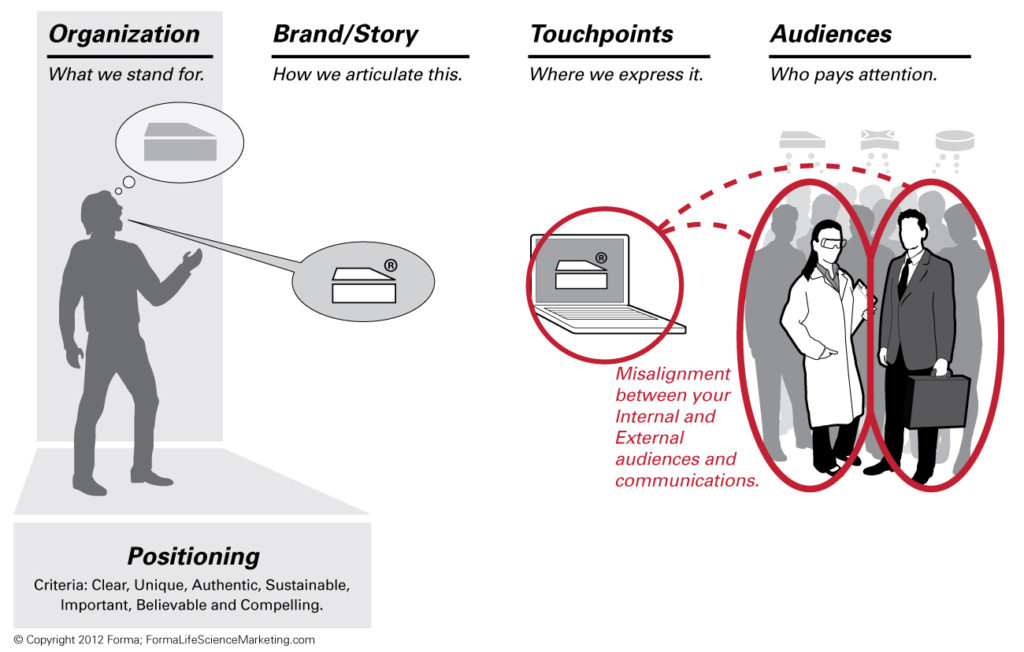The Four Common Types of Misalignment in Life Science Marketing
By David Chapin

SUMMARY
VOLUME 4
, NUMER 10
A common problem in life science marketing is misalignment. Misalignment can severely impede your life science marketing efforts, resulting in a variety of symptoms. This issue examines this all too common problem. We begin with a simple assessment to help you determine if your marketing is correctly aligned. We’ll review the Marketing Mechanism of Action as a framework for understanding the four different types of misalignment.
The alignment problem in life science marketing.
This issue addresses a problem that is all too common in life science marketing – misalignment. Before I describe the problem in more detail, take this brief quiz: answer Yes or No to each of the following questions. (For brevity’s sake, when I refer to “your organization” I typically mean your organization, your products and/or your services.) I suggest you make note of your answers, as we’ll be referring to them later in this issue.
- Do you have a clear, written position statement that defines your organization’s unique competitive advantages and your target markets, used internally to guide the implementation of all your marketing efforts?
- Does your brand/story (for example, your messages, your “look and feel” and your content) clearly articulate your unique competitive position?
- Do all your touchpoints (e.g., your website, your trade show efforts, your whitepapers, your webinars, your email blasts) consistently express your brand/story?
- Do you have an integrated communications plan that addresses both internal and external audiences?
- Do your prospects see real differences between you and your competition?
- Have you tested your marketing communications to ensure that your audiences find them important, believable and compelling?
- Do you have a guiding document for your brand (or your messages or your corporate identity) and a person responsible for ensuring that these are coordinated at each customer touchpoint?
- Do your employees know who their top three competitors are, and how you are different/better than each? Are their answers consistent from employee to employee?
- Does your brand/story live everywhere, rather than just in the marketing department?
If you answered “No” to any of these, your marketing efforts are not operating at full effectiveness, are they? You have one (or more) of four distinct, but related problems. We’ll refer to these related problems as an issue with your marketing “alignment.”
The Marketing Mechanism of Action in life science marketing
The Marketing Mechanism of Action describes the mechanism through which your marketing strategies and tactics will influence your audiences’ attitudes, beliefs and behaviors. As a brief review, the Marketing Mechanism of Action works like this:
- Your unique position must be carefully chosen (to meet the seven key criteria for an effective position, namely, your position must be: clear, unique, authentic, sustainable, important, believable and compelling). Once you have a clear, compelling position, then…
- Your unique position must be clearly articulated in your brand/story. Then…
- Your brand/story must be expressed consistently through all your touchpoints. And finally…
- Your internal and external communications must be aligned in both strategy and tactics. That is, you must pay as much attention to your internal audiences as you do to your external ones.
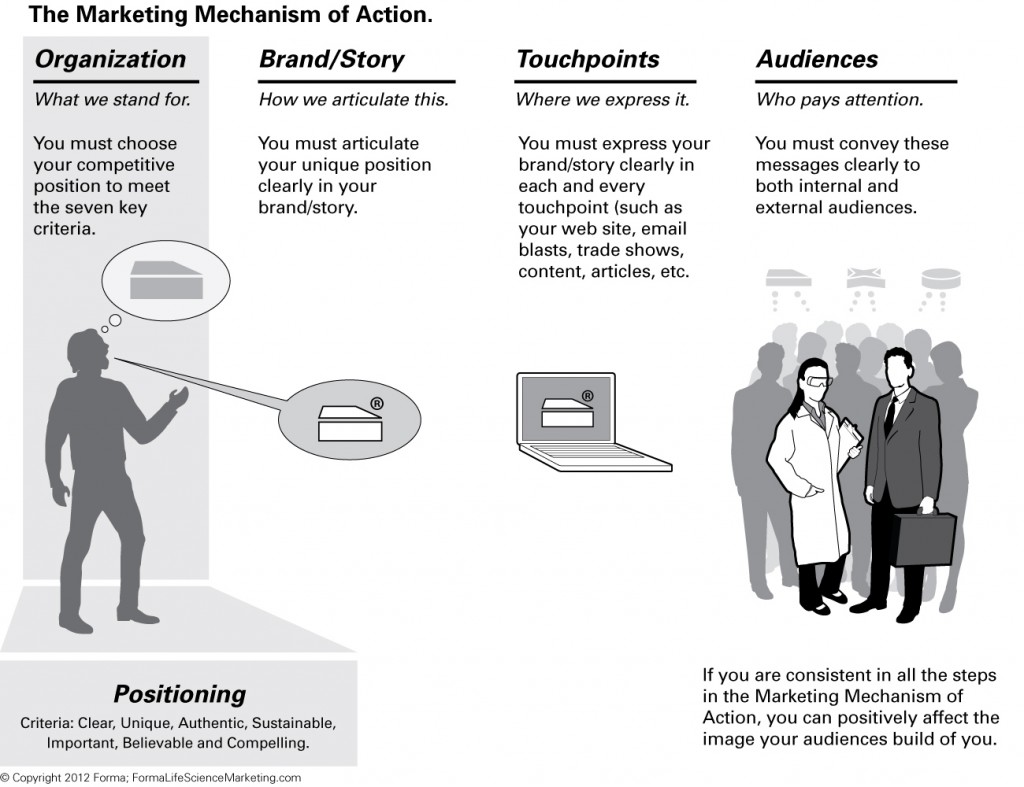
Figure 1: The Marketing Mechanism of Action describes how your marketing strategies and tactics help your audiences shape their impression of your organization, products and services, leading to changes in their attitudes, beliefs and behaviors.
On the other hand, if you have misalignment at one or more of these steps, your audiences (again, both internal and external) will still have an impression of your organization, but your role in shaping or influencing this image will have been very small, so your audience will think whatever they want about your organization. Your audiences will still be basing their impressions of your organization, your products and your services on information and impressions, but these will be largely outside of your control. When this happens, your marketing is ineffective. Because your audiences have decided (without significant input from you) what attributes they will ascribe to your organization, your products or your services, you’ll have to spend a lot of money trying to correct their misinterpretations.
The four types of misalignment in life science marketing
There are four key steps in the Marketing Mechanism of Action. Since there can be misalignment associated with each step, there are four types of alignment challenges.
Second, the misalignment could be between your position and your brand/story. This is an issue with how your position is articulated, and so is an issue with the way you bridge the gap between your marketing strategy and your marketing tactics. If you answered “No” to questions 2 or 6, you could be suffering from this type of misalignment.
Third, the misalignment could be between your brand/story and your touchpoints. This is a tactical alignment issue, that is: your touchpoints are not aligned with your core verbal and visual messages. If you answered “No” to questions 3 or 7, you could be suffering from this type of misalignment.
Last, the misalignment could be between your internal and your external audiences and communications. This is a tactical alignment issue, but is more focused on execution than the previous one. If you answered “No” to questions 4, 8 or 9, you could be suffering from this type of misalignment.
Symptoms of misalignment in life science marketing.
Companies with alignment issues can suffer from a variety of symptoms, including, but not limited to:
- poor employee engagement (including, perhaps, high turnover).
- a confused marketplace (“What exactly do they stand for? How are they unique?”)
- confused employees (“What exactly do we stand for? How are we unique?”)
- ineffective marketing (“Why are we spending so much and getting so little in return?”)
- lack of marketing focus (“What opportunities should we be pursuing? Let’s pursue them all, even those for which we are poorly suited.”)
- lack of messaging focus (“We’ll try to say it all, since we don’t have the discipline to stay on message or don’t know what we should say.”)
Not all of these symptoms are caused solely by marketing misalignment – for example, there can be many additional reasons for poor employee engagement. But marketing misalignment can be a strong contributing factor to many of these. Do you recognize these symptoms as your own?
Diagnosis of misalignment in life science marketing
Fixing misalignment issues in life science marketing
There are many challenges in fixing misalignment issues, and the treatment depends on which symptoms your organization exhibits and the severity of your specific challenges. Before you begin treating these issues, understanding and diagnosing the different types of misalignment will enable you to address your individual challenges. We’ll discuss specific diagnostic tools you can use to sort out one type of misalignment from another in a future issue.
Summary
- Misalignment in life science marketing is an all-too-common problem.
- There are four key steps in the Marketing Mechanism of Action.
- Consequently, there are four major types of misalignment.
- Misalignment 1: Your position is not aligned with your audiences’ needs.
- Misalignment 2: Your brand/story is not aligned with your position.
- Misalignment 3: Your touchpoints are not aligned with your brand story.
- Misalignment 4: Your internal and external communications are not aligned.
- Symptoms of misalignment can include the following:
- poor employee engagement (including, perhaps, high turnover).
- a confused marketplace (“What exactly do they stand for? How are they unique?”)
- confused employees (“What exactly do we stand for? How are we unique?”)
- ineffective marketing (“Why are we spending so much and getting so little in return?”)
- lack of marketing focus (“What opportunities should we be pursuing? Let’s pursue them all, even those for which we are poorly suited.”)
- lack of messaging focus (“We’ll try to say it all, since we don’t have the discipline to stay on message or don’t know what we should say.”)
- A clear diagnosis is crucial in identifying which type of misalignment is present.
The Marketing of Science is published by Forma Life Science Marketing approximately ten times per year. To subscribe to this free publication, email us at info@formalifesciencemarketing.com.
David Chapin is author of the book “The Marketing of Science: Making the Complex Compelling,” available now from Rockbench Press and on Amazon. He was named Best Consultant in the inaugural 2013 BDO Triangle Life Science Awards. David serves on the board of NCBio.
David has a Bachelor’s degree in Physics from Swarthmore College and a Master’s degree in Design from NC State University. He is the named inventor on more than forty patents in the US and abroad. His work has been recognized by AIGA, and featured in publications such as the Harvard Business Review, ID magazine, Print magazine, Design News magazine and Medical Marketing and Media. David has authored articles published by Life Science Leader, Impact, and PharmaExec magazines and MedAd News. He has taught at the Kenan-Flagler Business School at UNC-Chapel Hill and at the College of Design at NC State University. He has lectured and presented to numerous groups about various topics in marketing.
Forma Life Science Marketing is a leading marketing firm for life science, companies. Forma works with life science organizations to increase marketing effectiveness and drive revenue, differentiate organizations, focus their messages and align their employee teams. Forma distills and communicates complex messages into compelling communications; we make the complex compelling.
© 2024 Forma Life Science Marketing, Inc. All rights reserved. No part of this document may be reproduced or transmitted without obtaining written permission from Forma Life Science Marketing.
